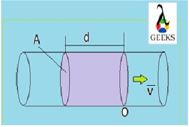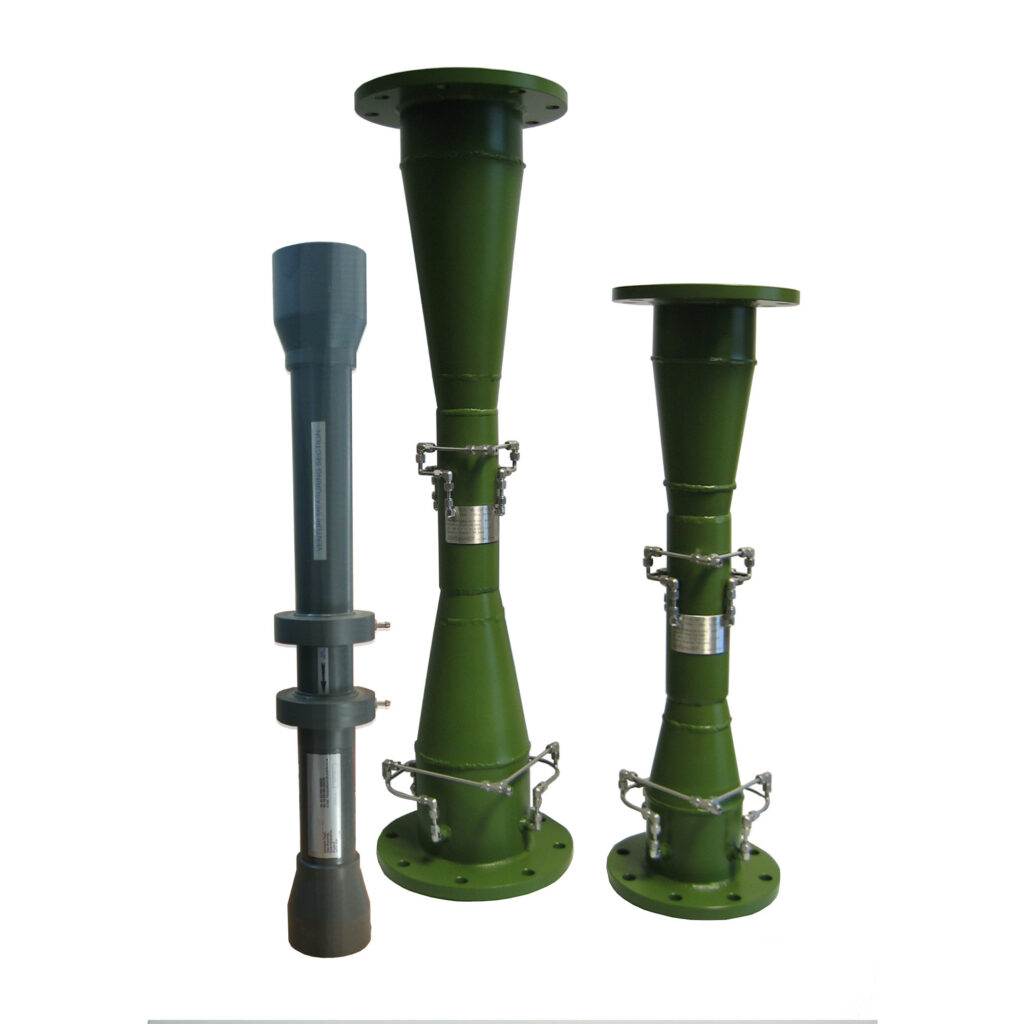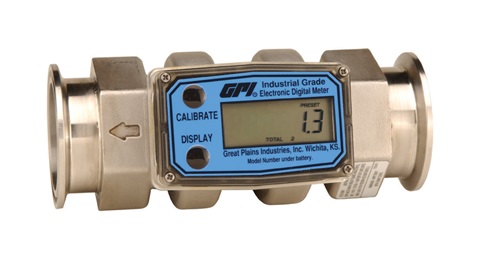Proper understanding of Mass Flow Rate Vs Flow Rate is necessary to decide which flow instrument is right for a particular application.
Mass Flow Rate can be defined as the mass of a fluid, it may be liquid or gas, flows through a cross sectional area within a time period. Similarly Flow Rate can be defined as the volume of a fluid which may be liquid or gas flows through a given cross sectional area per unit time.
Why Mass flow and volume flow rate measurement are important facts in a process industry?
The accurate measurement of the fluid flowing through a duct, either it may be a gas or liquid is a critical parameter in many industries.
- Decision of right fluid at accurate amount and right time is mandatory to run an operation.
- Accurate flow measurement influences the product quality, health and safety.
- A devastating situation may occur due to wrong measurement of flow during an operation.
- It also helps in supervision of assets by regulating the fluid movement or maintaining a balanced amount in the tank.
- Income of an industry depends on the correct measurement of mass and volume flow rate.
What is Mass Flow Rate?
Mass is the how much matter present in a substance and often expressed in weight i.e. gm, kg, pounds, tonnes etc.
Mass Flow Rate is the number of molecules of a fluid pass through the cross sectional area of a pipe within a particular time period. It is denoted by ṁ (m dot).
ṁ=mass/time=m/t
Commonly used units of mass flow rate are kilogram/second or pounds/hour.
Mass flow can be represented by the following formula:
Mass=density x volume=density x Area x velocity
ṁ = ρ A v
Where
ṁ = mass flow rate in kg/s
ρ = density in kg/m3
A = area/section of pipe or a channel in m2
v =velocity in m/s
What is Volume Flow Rate ?
Volume Flow Rate or rate of fluid gives the flow of some volume of any fluid through a cross sectional area per unit time and is denoted by Q or V.
Volume Flow rate also known as actual flow rate indicates the volume of fluid flowing through a duct or pipe per unit time. Different units of Flow rate are cubic metres per second, cubic centimetres per minute, litre per minute etc.
If we consider a kitchen faucet, the amount of water( in litre or cubic metre) flows through the faucet within a particular time period ( in second or minute),then this amount of water flow can be considered as the volume flow rate. This term is always applicable to gases and liquids.
Volumetric flow can be represented by the following formula:
Q=V /t
Where
Q= Volume flow rate m3/s or L/s .
V=Volume of fluid in litre or cubic metre
=Average velocity of flow( Average value is considered because at every part velocity of the fluid is not same)m/s
A=Cross sectional area occupied by the moving fluid m2
=Cross sectional area x Average velocity

Mass Flow Rate Vs Flow Rate
The concept of Mass Flow Rate vs Flow Rate is the important parameter for ensuring safe, smooth and cost effective running of fluid control processes.
Difference between Mass Flow rate and Volume Flow Rate
| Mass Flow Rate | Volume Flow Rate |
| Actual mass of a fluid which travels through a measuring instrument per unit of time | Volume of fluid that passes through a measuring instrument per unit time. |
| Preferable in case of high accuracy with a high pressure rating | Generally preferred when high accuracy isn’t necessary. |
| There is no change in mass flow rate with changing pressure and temperature. | Changes in Flow rate occurs with pressure and temperature is changed. |
| Formula for mass flow rate, ṁ = Density x cross sectional area x velocity | Formula for volume flow rate, Q=Cross sectional area x Av. velocity |
| Mass flow is measured in kilogram/second | Volume flow rate is measured in litre/second or cubic metre/second. |
Relationship between Mass Flow rate and Volume Flow Rate
We know that,
m = ρ.V Eq1
Where m=mass
ρ=density
V=volume
If we multiply both sides of Eq(1) with time, t, then we get
m/t = ρ.V/t
ṁ = ρ.Q Eq2
Where ṁ=mass flow rate
Q= Volume flow rate
but Q= Volume flow rate= Cross sectional area(A) x Average velocity
From Eq (2)
Eq3
Comparison of Mass Flow rate Vs Flow Rate Measurement
The cost between mass flow measurement and volume flow measurement is quite significant.
There is a wide difference between the mass flow rate and volume flow rate measuring devices in terms of cost, generally mass flow meter are costly in comparison to volume flow meters.
But extra expenditure is associated with volume flow meters since we have to purchase and install some temperature and pressure measuring devices to get a correct value.
An advantage associated with mass flow rate measurement is when mass flow rate of a fluid is measured, the mass or weight of the fluid does not fluctuate with the change of pressure and temperature.
From mass flow measuring devices we get more reliable and precise data in comparison to flow rate measuring devices.
Depending on the requirement (like want to measure a set of volume or the number of molecules) of application we decide to use mass flow or volume flow rate of a fluid.
Mass flow rate remains constant regardless of change in pressure and temperature. Sometimes mass flow instruments are preferred over volume flow instruments due to the ability of measuring and controlling the movement of gas molecules accurately during in and out of a process.
Examples of Mass Flow Applications are
Gas mixing applications,custody transfer applications, manufacturing optical fibres, mass flow is used to regulate oxygen and CO2 levels in bioreactors,mass flow devices are used in the burner control application etc.
Examples of volumetric flow measurement are
To monitor ambient air and to maintain industrial hygiene are the two applications that make use of volumetric flow. The main aim in each of the application to compute the number of air particles in a specific volume of air under certain ambient conditions.
Mass Flow Devices and volumetric Flow Devices
The principle used to measure flow also depends upon the service of the fluid to be measured.
The principles of flow measurement either in mass or volumetric basis varies widely and so are their accuracy level and cost of the measuring device.
Majority of the flow devices measure the flow by using the principle of Bernoulli’s theorem that calculates the velocity of fluid by measuring the pressure drop between two successive points in the flow path.
The differential pressure (DP Type) flow-meters are most widely used flow measuring devices used in the industry, where the fluid is allowed to pass through a flow orifice plate and differential pressure across the orifice is measured to calculate the flow.
The venturi flow-meters and pitot-tube flow meters too work on similar principle.
The only device that measures the flow by measuring its volume is the positive displacement or PD meter. This device has quite good accuracy levels and used widely in custody transfer applications majorly in oil and gas service.
The following devices measure volumetric flow:
- Positive displacement meters
- Turbine flow meters
- Orifice plates
- Venturis
- Vortex meters
- Pitot tubes
- Rotometers


Compared to Volumetric flow, the number of technology available to measure directly the mass flow is limited. The most common among them is the coriolis meter, which measure the fluid vibration as it passes though the tube.
The thermal mass flow meter works on the principle of measurement of heat flow rate across the flowing fluid.
Ultrasonic flow-meters works on the principle of measurement of velocity of sound waves in the fluid to measure the fluid velocity.
The following devices measure mass flow:



I am Sangeeta Das. I have completed my Masters in Mechanical Engineering with specialization in I.C Engine and Automobiles. I have around ten years of experience encompassing industry and academia. My area of interest includes I.C. Engines, Aerodynamics and Fluid Mechanics. You can reach me at